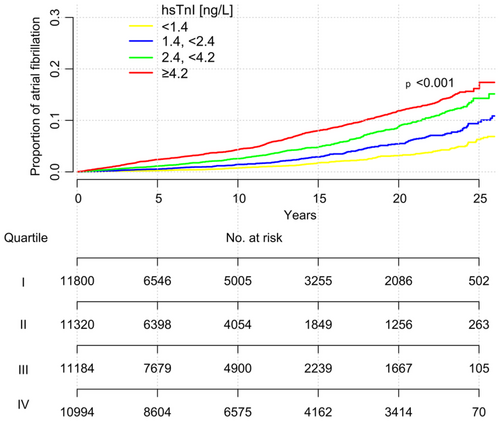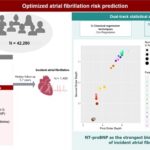
Risk prediction of atrial fibrillation and its complications in the community using hs troponin I
Atrial fibrillation (AF) is becoming increasingly common. Traditional cardiovascular risk factors (CVRF) do not explain all AF cases. Blood-based biomarkers reflecting cardiac injury such as high-sensitivity troponin I (hsTnI) may help close this gap. The study investigated the predictive ability of hsTnI for incident AF in 45,298 participants (median age 51.4 years, 45.0% men) across European community cohorts in comparison to CVRF and established biomarkers (C-reactive protein, N-terminal pro B-type natriuretic peptide). During a median follow-up of 7.7 years, 1734 (3.8%) participants developed AF. Those in the highest hsTnI quarter (≥4.2 ng/L) had a 3.91-fold (95% confidence interval (CI) 3.30, 4.63; p < .01) risk for developing AF compared to the lowest quarter (<1.4 ng/L). hsTnI as a biomarker of myocardial injury does not improve prediction of AF incidence beyond classical CVRF and NT-proBNP. However, it is associated with the AF-related disease heart failure and mortality likely reflecting underlying subclinical cardiovascular impairment.
To read more: https://onlinelibrary.wiley.com/doi/10.1111/eci.13950

